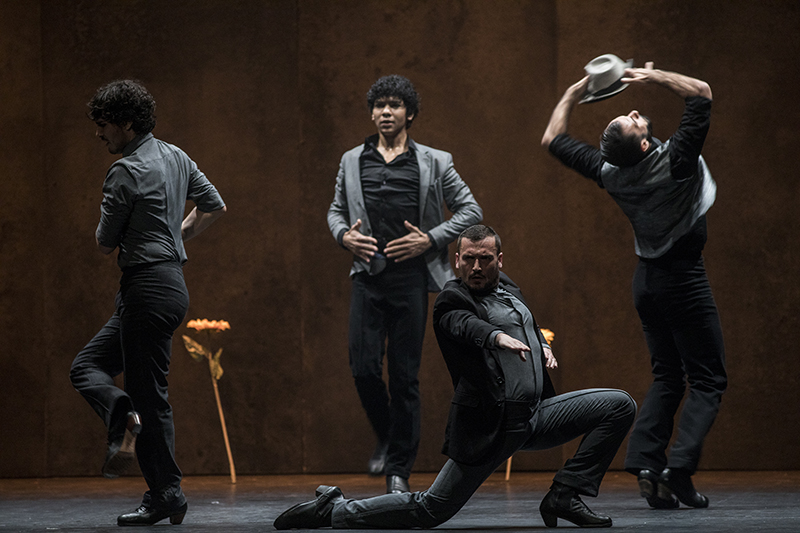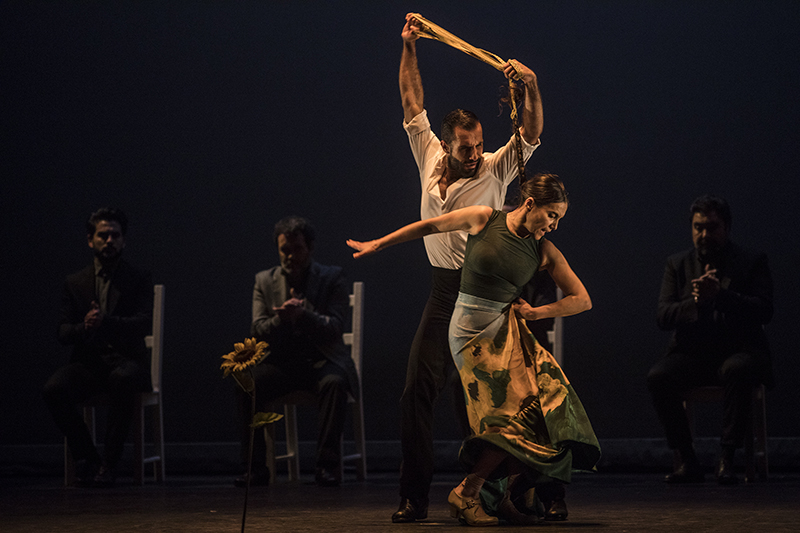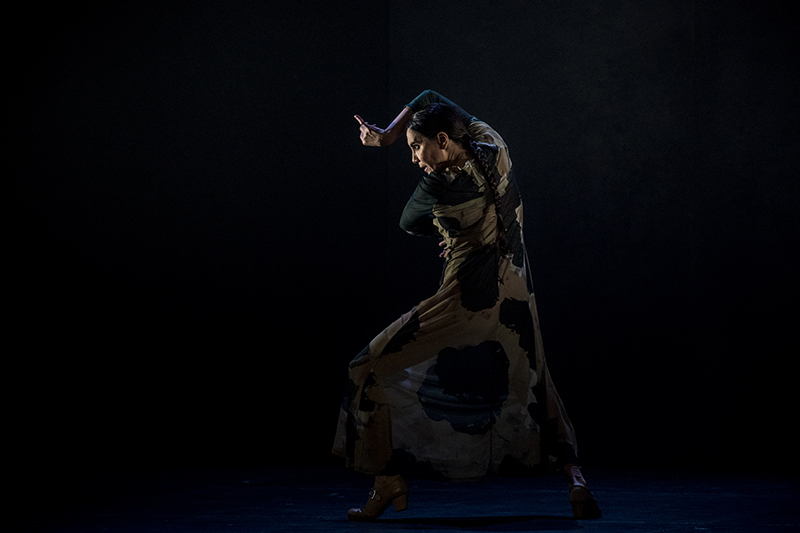The Jerez Festival of Flamenco and Spanish Dance in Jerez de la Frontera, Spain kicked off its XXIV edition on Friday, February 21 with the world premiere of a flamenco dancer and choreographer Rafaela Carrasco’s Ariadna. The production, directed by Carrasco in collaboration with dramaturg Alvaro Tato, is a semi-philosophical, slightly feminist retelling of the Greek myth of Theseus and the Minotaur, as told from the point of view of Ariadne, the Cretan princess who falls in love with Theseus. Ariadne betrays her father the king by helping Theseus escape from the Minotaur’s labyrinth and running away with him. In exchange for her devotion, Theseus abandons her on the island of Naxos when he tires and no longer has any use for her.
Ariadne is an oft-overlooked heroine in a fatalistic tale, one in which a woman is condemned for taking risks, falling in love, desiring something other than the life that has been thrust upon her and taking action to claim her independence. In this regard, Carrasco’s work does an excellent job of addressing how these character traits favour men, but not women.
Carrasco is the only woman in an all-male cast featuring four male dancers and six male musicians. Brilliantly, the men come together to represent the two male monoliths that have the power over Ariadne’s life: her father, King of Crete, and her lover, Theseus.

The production starts, where the myth ends, with Ariadne alone on the shores of Naxos. In the darkness, under the revolving light of a lighthouse, Carrasco dances a petenera, a somber yet dramatic style of flamenco often associated with a foreboding of death and despair. Carrasco’s solo transitions into the first of a series of wonderful ensemble pieces, which are the production’s crowning achievement.
Carrasco has a laudable knack for selecting fantastic dancers, and her cast does not disappoint. As the cantaores sing of what makes a king a king, Rafael Ramirez, Gabriel Matias, Ricardo Moro and Felipe Clivio, dance a choreography that sends their bodies crisscrossing across the stage as they pass a hat between one another. Whoever holds the “crown” draws the attention with crisp, beautifully performed solos. They are all the king, strong, rigid, unfaltering.

Similarly, the love scene between Ariadne and Theseus begins with the emergence of a single male dancers and a subsequent pas de deux, but it’s not long before he is followed by the three remaining dancers, who deftly pass Carrasco from one to the other. The use of four men to represent a single character creates vibrant scenes of movement in which bodies are constantly weaving around each other, reminding us that it was Ariadne who wove the thread that would lead Theseus out of the labyrinth.
Possibly the most impactful scene is that in which one of the male dancers grabs the thread coiled around Carrasco’s braided hair, pulling her in circles around him until the thread finally comes loose. There is a rawness to the choreography that suggests both sensuality, as their bodies wrap around one another, and violence, as he uses the thread to restrain her, at one point wrapping it around her neck and pulling her body into his.
Whereas the pas de deux and ensemble pieces fascinate, Carrasco’s solos are often long and tedious. This seems to be a common issue in her work. She’s a very skilled dancer, but her choreographic strengths – surprisingly for a flamenco artist – are partner work and group pieces.

Ariadna’s greatest weakness is its stage and costume design. The lights are stark throughout, which coupled with a grey paper mache style backdrop gives the show a dark, flat look that does not favor dance. The male dancers are clad entirely in grey and black throughout, while Carrasco dresses in a pallet of muted browns and greens. A sack dress with the patterning of a dairy cow opens and closes the performance, while the only splash of color comes from the sunflowers painted on a cape that looks more like a muumuu. The overall look of the show comes off as poorly constructed and amateur, which does its fair share to detract from the brilliance of the performers.


